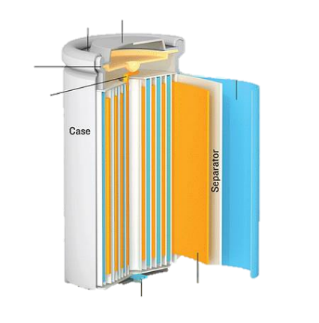
Simcenter™ Battery Design Studio™ software is a complete Siemens PLM’s battery modelling solution which offers a set of software and features which provides simulation capability on a wide range of length scale.
And this is perfectly appropriate as studying and designing batteries is a multi-scale problem.
Our software portfolio starts with our micro-structure electrochemistry tool, embedded in our flagship multi-physics software STAR-CCM+. The engineer can here study in 3D the effect of the electrode morphology on the electrochemical performance. This tool is addressed to material manufacturers and cell designers.
Then moving to the cell level, in Battery Design Studio. This software has the unique capability on the market to allow the cell designer to build a digital twin of the cell by configuring with high fidelity each component of the cell design. This design can then be coupled to a performance model to test virtually the cell in various conditions, like drive cycles, pulses etc
To study packs and modules, let’s move to the next level within STAR-CCM+ Battery Simulation Module which is an add-on to STAR-CCM+ to build and analyse the complexity of a pack and its thermal management system. Whether this is active or passive cooling, BSM help understanding the highly coupled behaviour of the packs electrical performance and the surrounding environment.
Finally to study a full system, co-simulation between LMS AMESIM and BSM is possible to bring to BSM even more realism in the driving cycles applied to the pack.
BDS Main Features
◆ User-friendly interface for input of various cell designs (stack, spiral)
◆ Visualization tools for examination of results
◆ Cell sizing and costing
◆ Database capability (active materials, electrolytes, separators, etc)
◆ Simulation models – physics-based, equivalent circuit models
◆ Virtual testers – cycler, oven, EIS, ARC
◆ Optimization/aregression routines for fitting model parameters to experimental data - fits results from multiple cells and tests simultaneously
◆ Gap analysis – determine suitability of a battery for an application
◆ Matlab/Simulink interoperability
◆ Security – encrypted files


